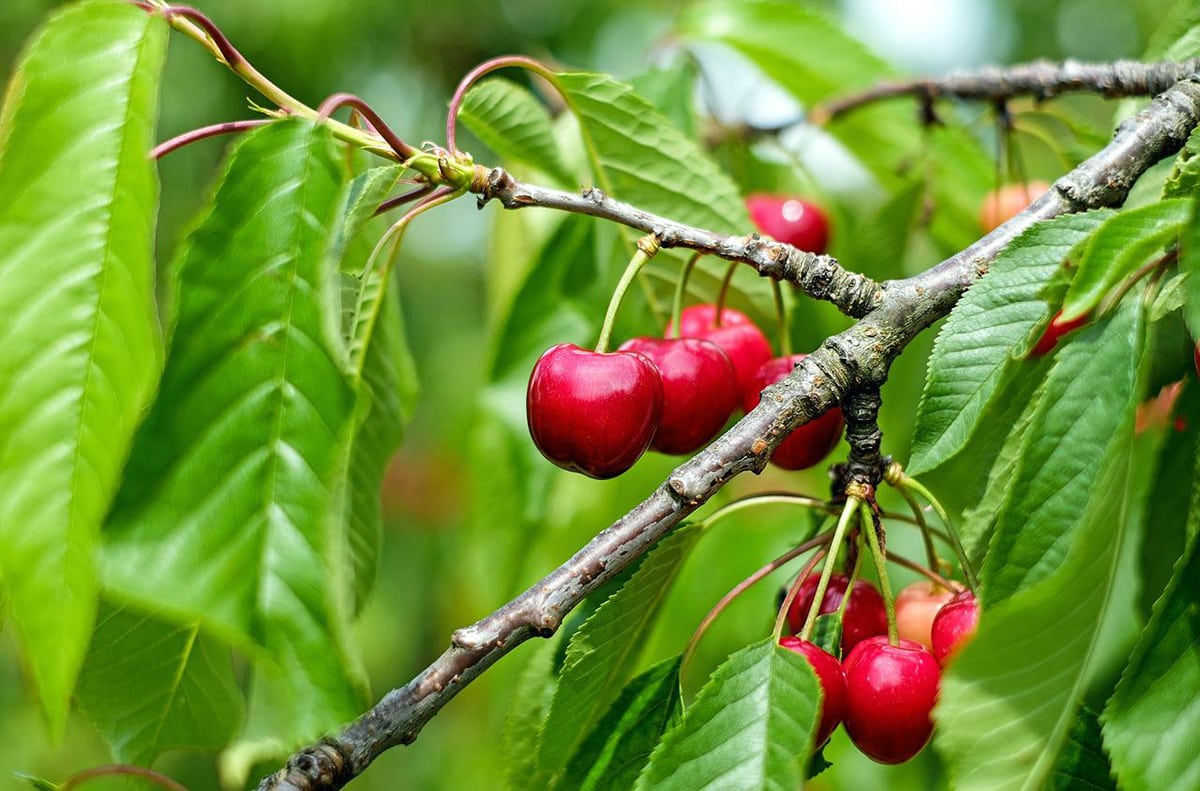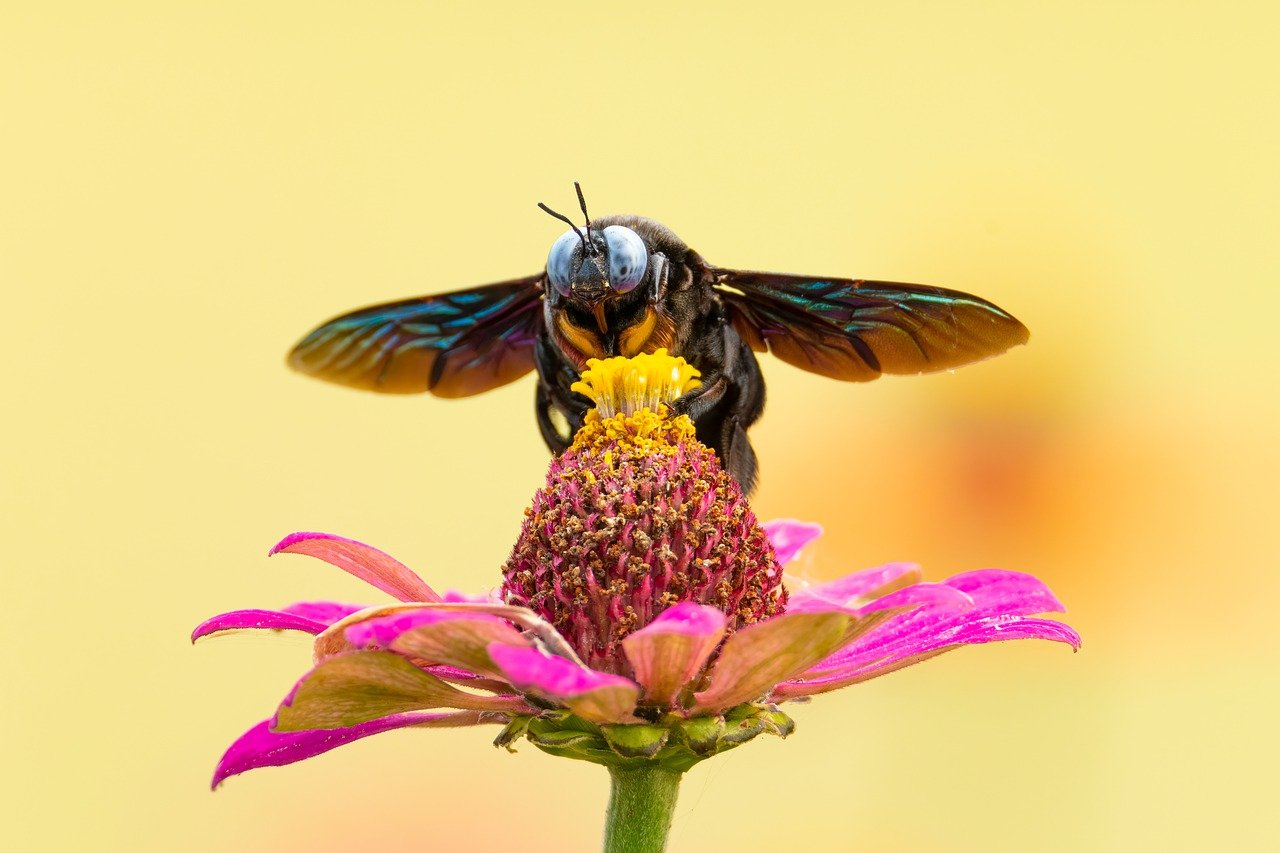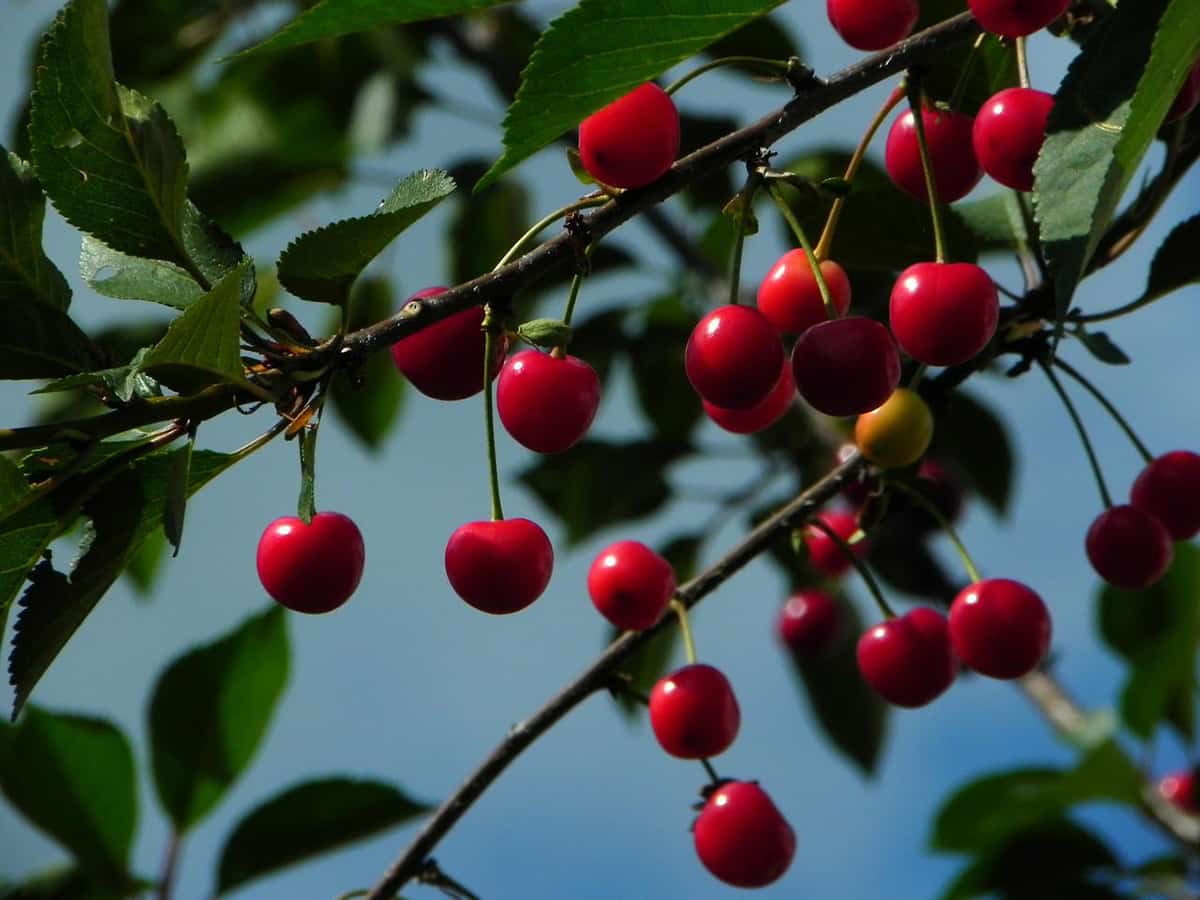
As you know, there are many varieties in each plant genus. Cherry trees are no exception. These beautiful fruit trees are very popular thanks to their beautiful flowers and their fruits that we like so much. But in this article we want to talk about a specific variety, a self-fertile tree widely cultivated in Spain: The burlat cherry.
We will explain what this vegetable is and when it usually blooms. Also, We will list the basic care that the burlat cherry tree requires, so you will no longer have an excuse not to cultivate it yourself. Without a doubt, it is a plant that is worth having in the orchard or in the garden.
What is the burlat cherry?

When we talk about the burlat cherry we refer to a variety of fruit tree belonging to the family Rosacea, specifically gender Prunus. Although the origin of this vegetable is not entirely clear, it is much more frequent in Europe, Western Asia and North Africa.
Regarding the appearance of this cherry variety, it is an erect deciduous tree, with good vigor, which It can reach a height of up to twenty meters, even more. The trunk is usually quite thick and has good branching. The bark is smooth and grayish in color. Over time it tends to crack, so we can distinguish which trees are the oldest. The crowns of the burlat cherry trees stand out for being very wide.
It must be said that it is a very striking and beautiful tree when it is in the flowering season. Therefore, it is ideal to beautify our gardens and, incidentally, harvest some of its delicious fruits: Cherries. All types of cherries, sweet and wild, belong to this variety. In addition, it should be noted that this fruit tree can be grown in many parts of the Iberian Peninsula.
What is a self-fertile cherry tree?
Another very important feature of the burlat cherry tree is that It is a self-fertile cherry tree. What is this? You may already know that there are different types of pollination: Direct and cross. Well, in short, we can say that in cross-pollination, plants need the help of the wind, insects and/or birds to reproduce. These so-called "vectors" transport pollen from a male to a female plant.

In contrast, in direct pollination these vectors are not necessary. This is because the same plant contains both male and female organs. thus being able to self-fertilize. This is the case of the burlat cherry tree, which can reproduce on its own and without external help. Nature is amazing, right?
The great advantage of self-fertile cherry trees is precisely the independence they have compared to plants that require cross-pollination. However, adverse weather conditions can reduce its ability to reproduce, such as excessive temperatures during the flowering season. Therefore it is highly recommended plan the planting and cultivation of cherry trees, bringing together various pollinator groups that share the flowering season.
When do burlat cherry trees bloom?
As we have already mentioned before, the burlat cherry tree is self-fertile. When it comes to pollinating, it is compatible with the lapins and of . However, the varieties that are sold today do not require any type of pollination, as long as the temperatures are adequate. The flowering of this fruit tree is early, usually taking place at the end of March. However, it will depend mainly on the area where we are and how cold it is.
Regarding the flowers, these are large and white. The most curious thing about them is that they are suitable for jams. The fruits, the famous cherries, are plump and bright red. Its pulp is compact and they have a sweet taste, ideal to consume fresh or in jam. They can generally be harvested between mid and late May.
Burbat cherry tree care

Now that we know a little more about the characteristics of the burlat cherry tree, let's talk a little about the basic care that it requires, in case we want to grow some ourselves. Below we will list the needs and recommendations for the culture of the burlat cherry tree:
- Location: The most recommended for this fruit tree is to locate it in full sun.
- Temperature: It is able to withstand quite low temperatures. However, if the weather is very cold, we must locate it in sheltered areas to protect the flowers from damage caused by late frosts or cold rains.
- Ground: The should usually be deep and fresh.
- Subscriber: In spring, the background fertilization must be done with manure. Later you can continue with this task using special fertilizers for fruit trees.
- Irrigation: Although it is true that it requires a lot of water, being cultivated many times as an irrigated plant, we must avoid excess humidity.
- Pruning: Generally very light pruning is done for maintenance.
Plagues and diseases
As with all plants, the burlat cherry tree can also be the victim of a pest or disease. The insects that most often attack this fruit tree are aphids and San Jose lice. Both can be combated with anti-cochineals. In terms of diseases, this variety of cherry tree tends to suffer more frequently gummosis and botrytis. Both can be treated with copper.
Generally, it is best to spray the fruit trees twice each year. The first treatment should be carried out in autumn, just before the leaves begin to fall. The second must be done in spring, shortly before the flowering season begins. You can mix the anti-cochineal with the fungicide with copper. The recommended amounts are as follows:
- Fungicide with copper: 50 grams per 10 liters of water
- Anti-cochineal: 10 cubic centimeters for every 20 liters of water (which would be 0,5 cubic centimeters for every liter of water)
Having all this information about the burlat cherry tree, it must be said that it is ideal to grow it. It is highly ornamental and its fruits are delicious. Taking care of it properly and with patience we can enjoy a wonder of nature. What more can we ask for?